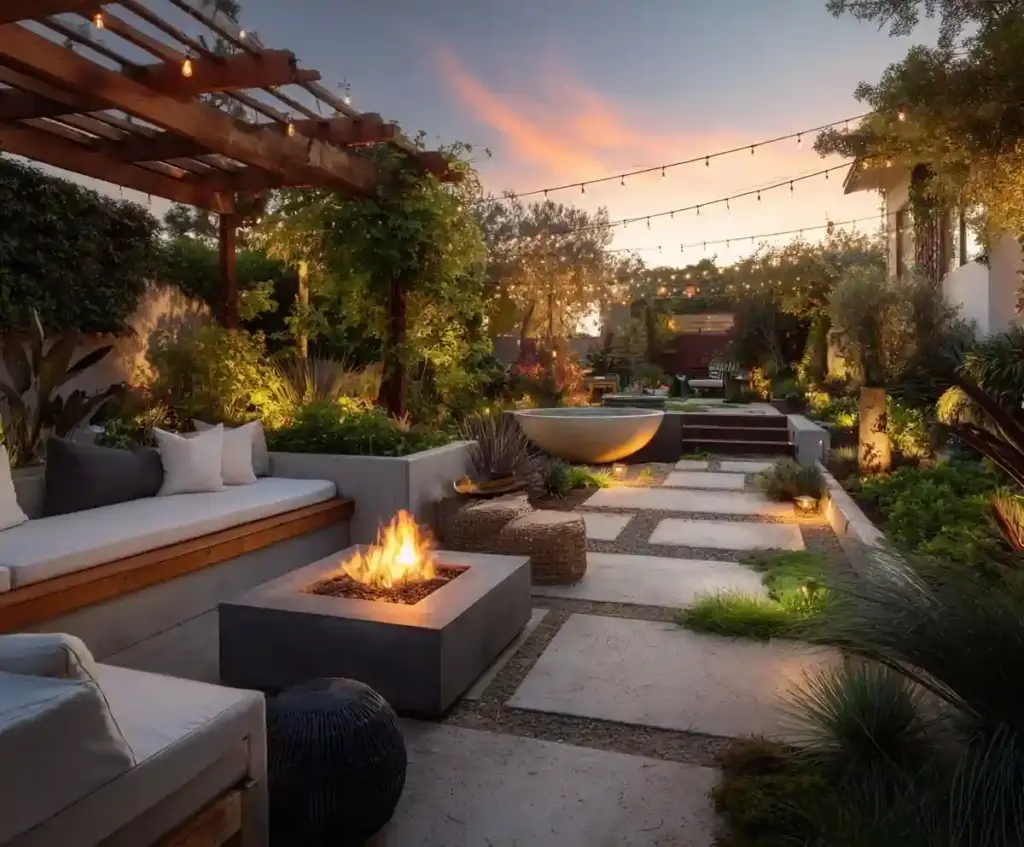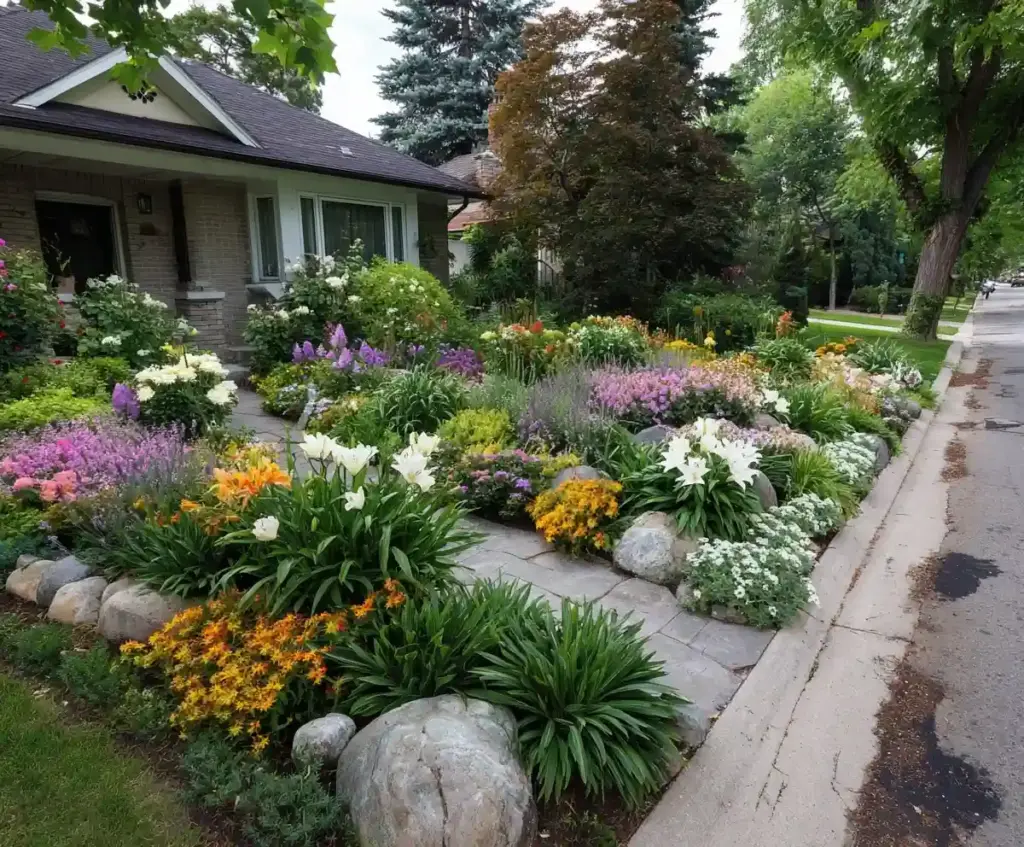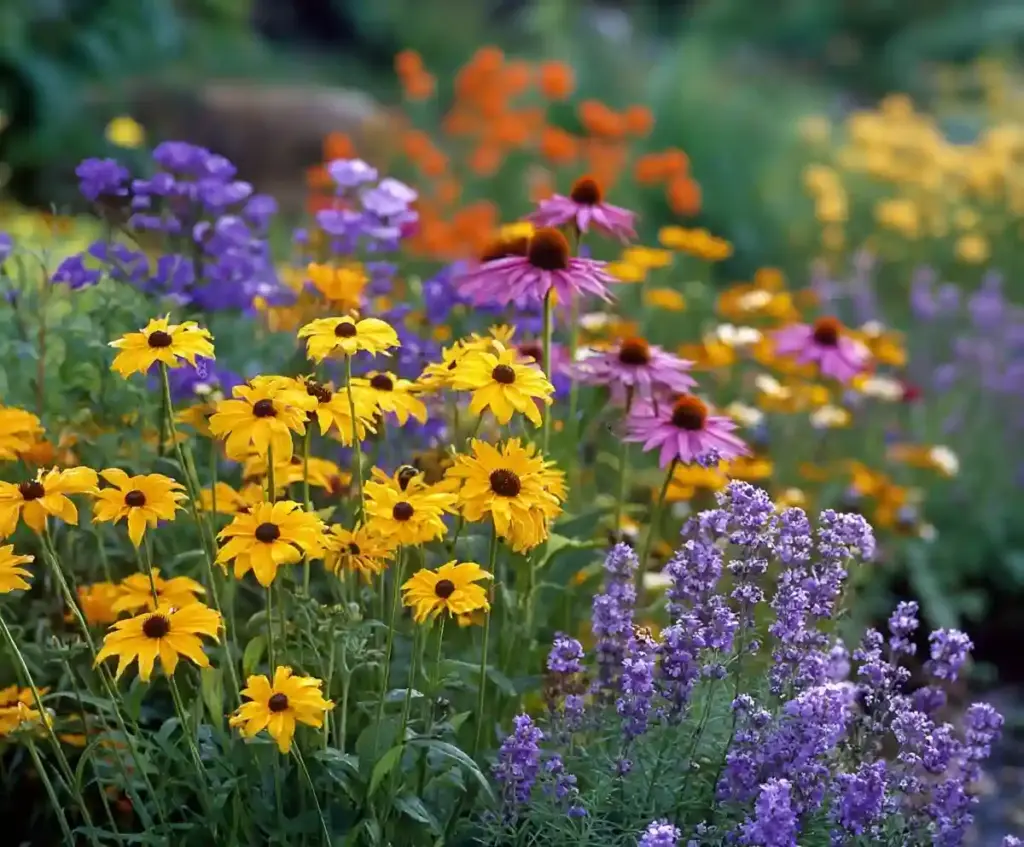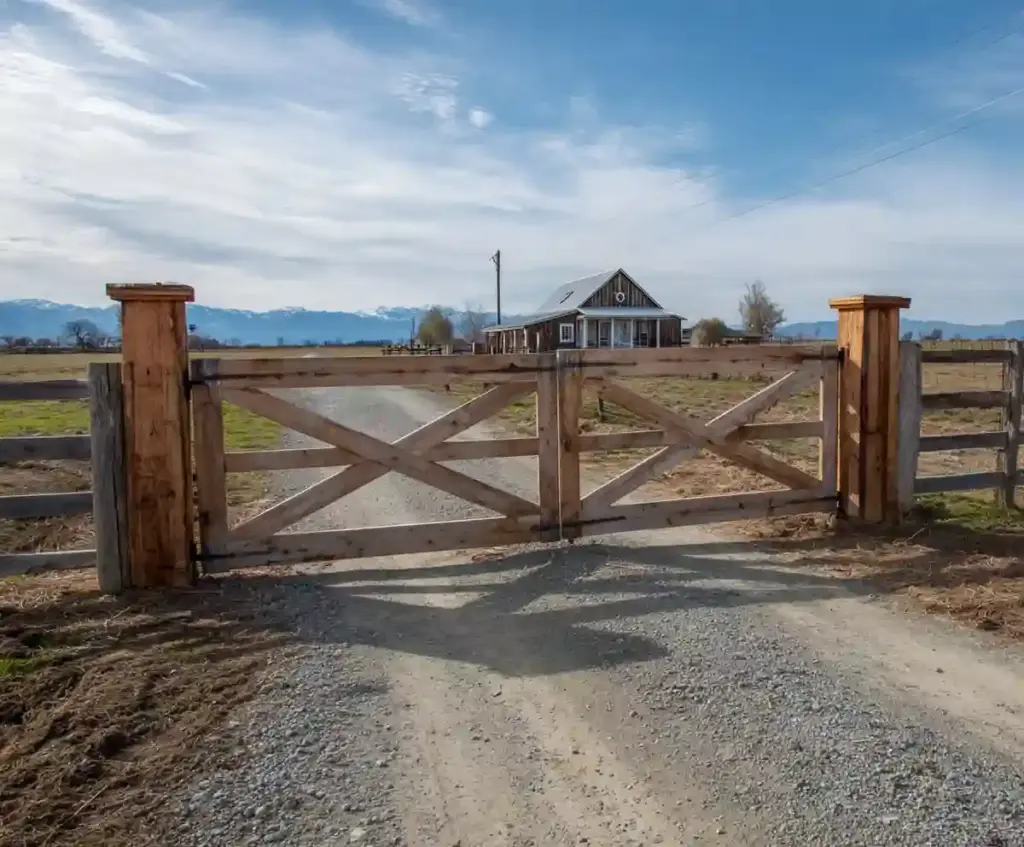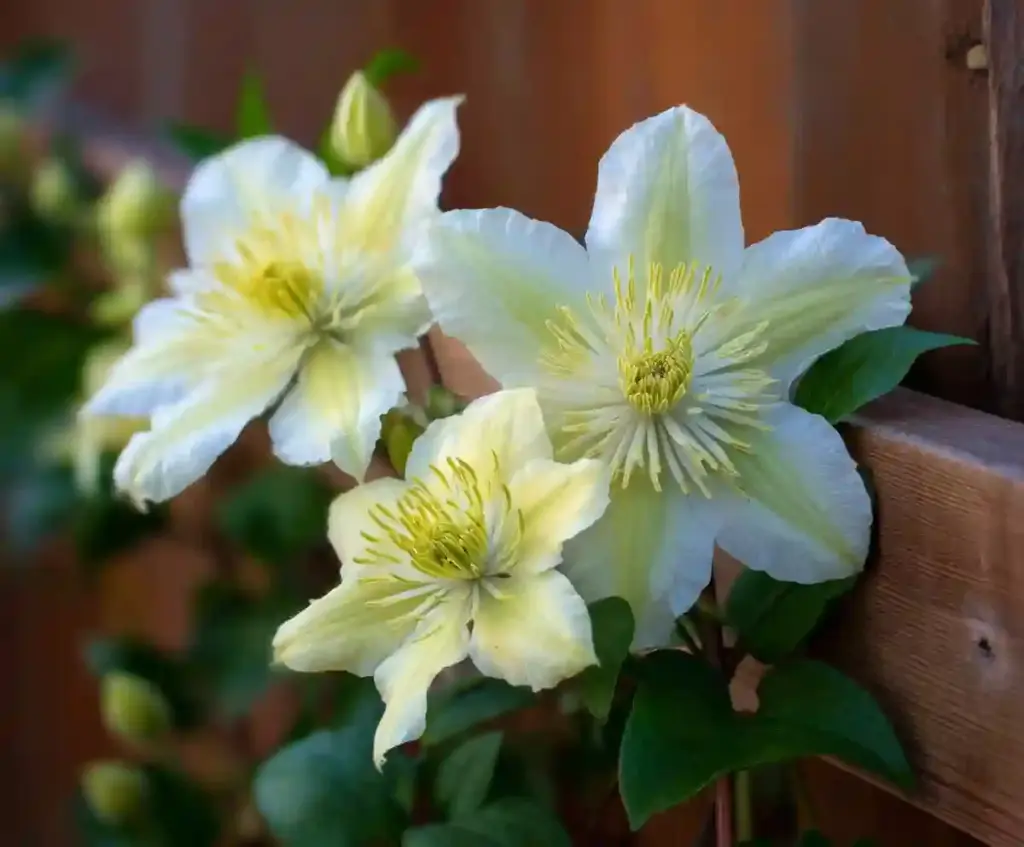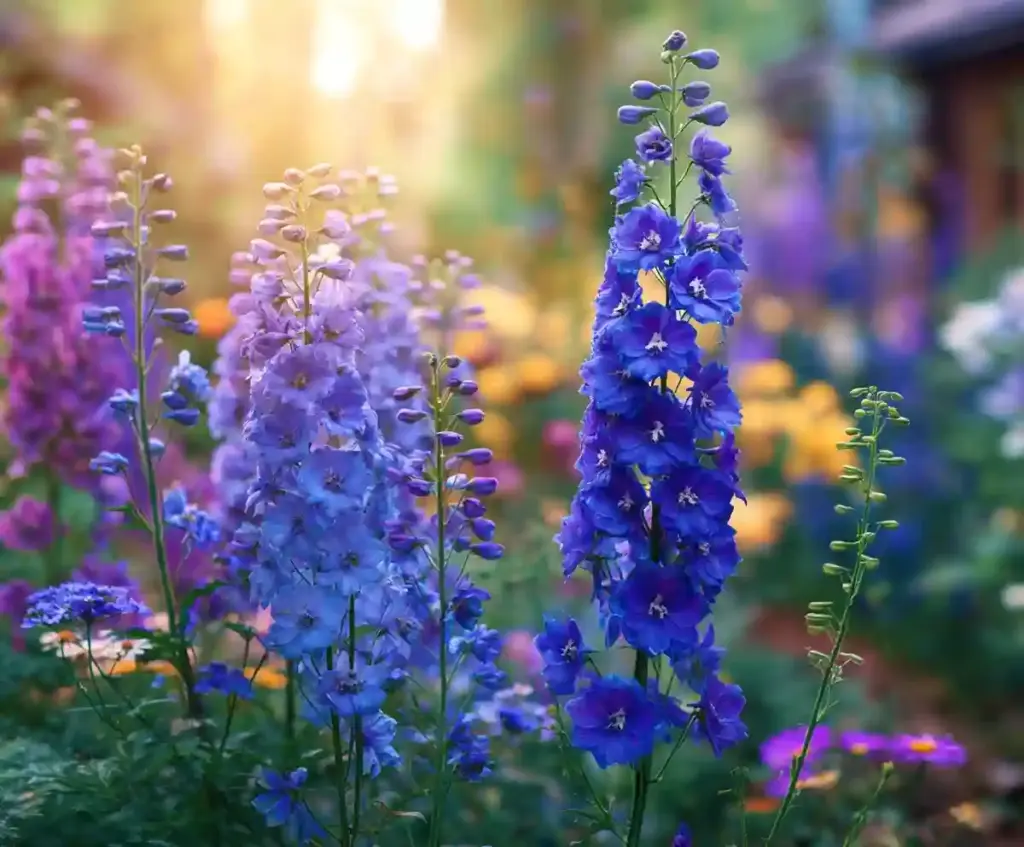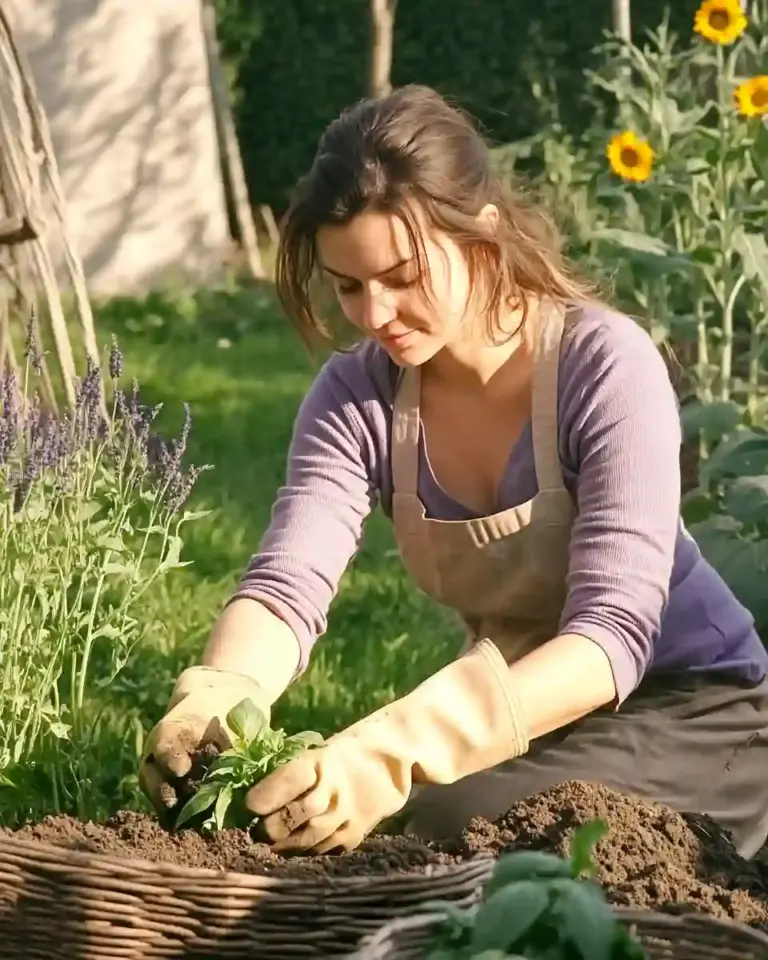Stunning types of hibiscus bring a touch of the tropics to gardens everywhere, thanks to their bold colors, lush blooms, and diverse personalities. Whether you’re looking to enhance a small patio with a compact flowering shrub or turn your backyard into a vibrant floral showcase, there’s a hibiscus variety that fits the bill. From classic reds to multi-toned hybrids, these plants thrive in a range of climates and styles. In this guide, we’ll highlight 29 of the most visually striking and garden-worthy hibiscus varieties you’ll want to consider for your landscape.
Table of Contents
1. Hawaiian Hibiscus
The Hawaiian hibiscus is a tropical showstopper and a signature symbol of island beauty. Known for its stunning types of hibiscus blooms in rich shades of red, yellow, orange, and salmon, this variety thrives in warm, sunny climates. It’s more than just beautiful—this native plant holds the honor of being Hawaii’s state flower.
These hibiscus shrubs can grow between 4 to 16 feet tall, making them excellent for creating a natural privacy screen or tropical hedge. With proper care, including regular watering and full sun exposure, they offer long-lasting blooms that attract butterflies and hummingbirds. Their low-maintenance nature and lush, dramatic flowers make them a favorite for coastal and subtropical landscapes.
2. Sea Hibiscus

Among the most stunning types of hibiscus, the Sea Hibiscus stands out with its buttery yellow blossoms and soft, heart-shaped leaves. Native to coastal regions of Asia and the Pacific Islands, this versatile plant is a favorite for seaside gardens due to its salt tolerance and adaptability to sandy soil.
It grows as a medium to large shrub or small tree, typically reaching heights of 10 to 15 feet. The blooms open bright yellow and gradually fade to orange or maroon by evening, creating a subtle color-changing effect. Its flexible branches and attractive foliage make it suitable for bonsai, hedging, or ornamental borders in tropical landscapes.
Ideal for warm, humid climates, the Sea Hibiscus requires moderate watering and thrives in full to partial sun. Its resilience and unique floral characteristics make it a go-to choice for gardeners seeking structure and color near coastal areas.
3. Black Dragon
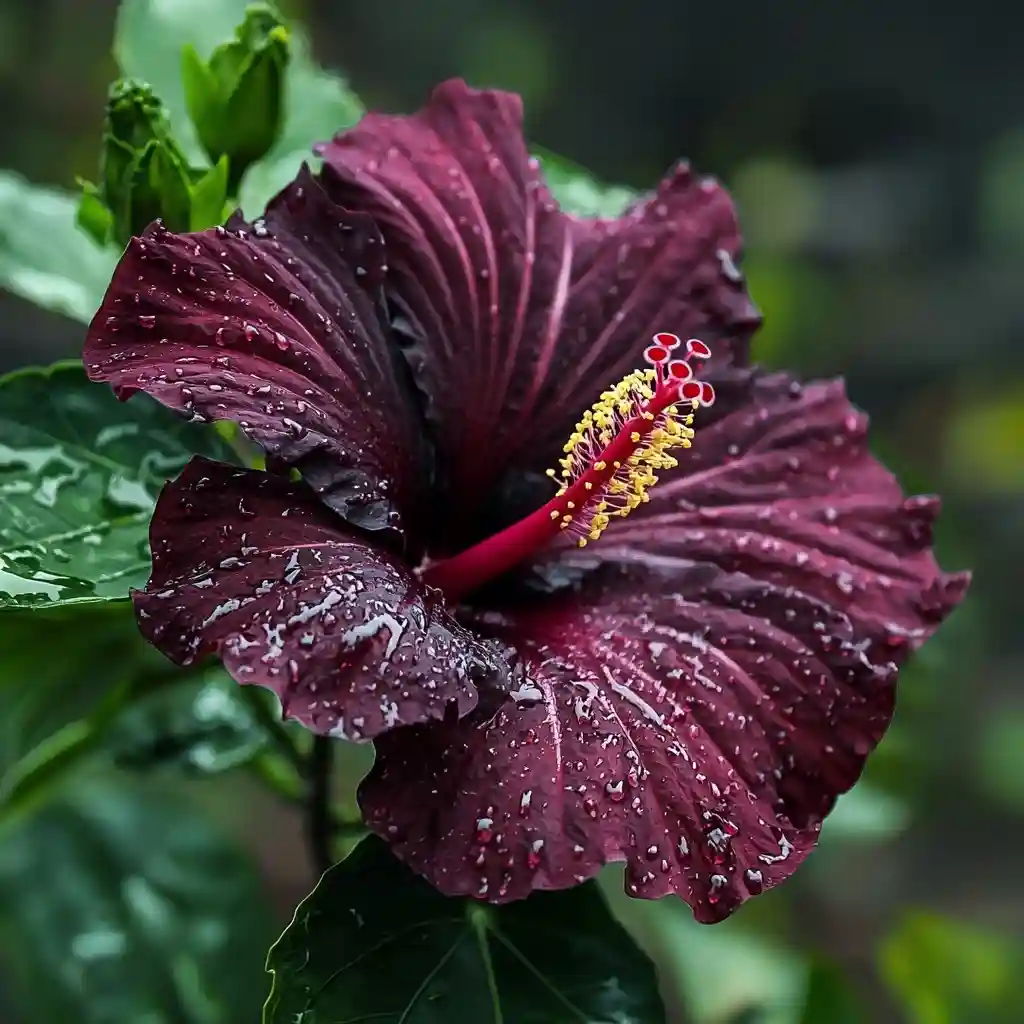
The Black Dragon hibiscus is one of the most stunning types of hibiscus for gardeners seeking drama and depth. With velvety, ruffled petals in deep burgundy or nearly black shades, this variety makes a bold statement in any garden setting. It’s a cultivar of Hibiscus rosa-sinensis, known for its tropical flair and intense color saturation.
Typically growing 3 to 6 feet tall, the Black Dragon thrives in full sun and requires regular watering to support its large, showy blooms. Each flower lasts only a day or two, but the plant produces them in succession throughout the growing season. Its dark hues contrast beautifully against lush green foliage, adding rich texture and visual interest to flower beds or container displays.
Awarded recognition by hibiscus societies for its unique appearance, Black Dragon is ideal for warm climate gardeners who want something exotic and unforgettable in their plant palette.
4. Beach Beauty
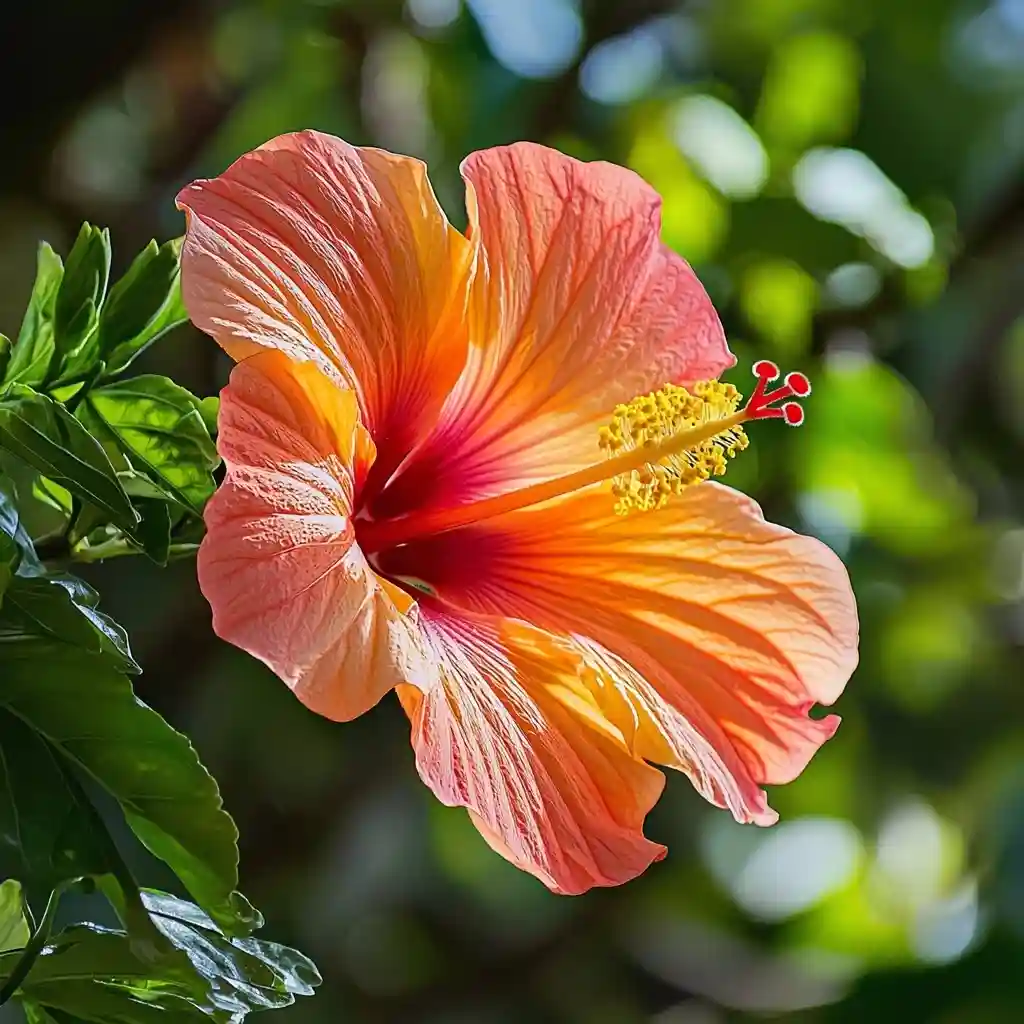
Living up to its name, the Beach Beauty hibiscus delivers vibrant flair with large, radiant flowers that span 6 to 8 inches wide. As one of the most stunning types of hibiscus, it features a bold red center surrounded by petals that shift into sunset tones of orange, peach, and yellow—making it a tropical masterpiece in bloom.
This hybrid variety thrives in warm, sunny environments and reaches heights of 15 to 20 feet when mature, creating an eye-catching focal point in any coastal or subtropical garden. It blooms heavily during the summer, drawing in bees, butterflies, and hummingbirds with its brilliant colors and sweet nectar.
Beach Beauty is well-suited to garden beds, poolside landscaping, or even large containers with adequate support. With regular watering and full sunlight, it produces continuous waves of color, bringing the relaxed elegance of the tropics right to your backyard.
5. Rose of Sharon
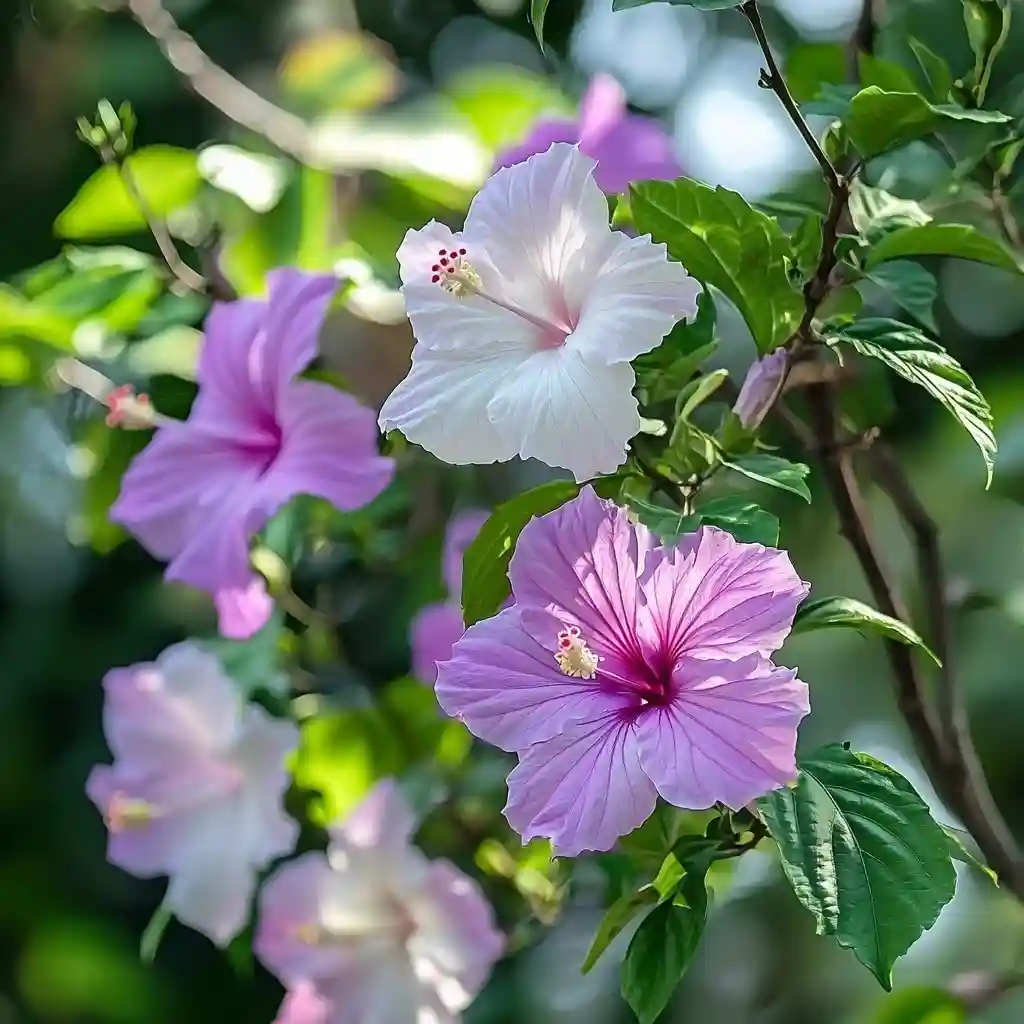
The Rose of Sharon is a classic favorite among the most stunning types of hibiscus, admired for its resilience and versatile beauty. Known botanically as Hibiscus syriacus, this deciduous shrub brings an abundance of blooms in shades of violet, white, pink, and even bicolor, often accented by a prominent darker throat.
Unlike its tropical cousins, the Rose of Sharon tolerates cooler climates, thriving in USDA zones 5 through 9. It typically grows 5 to 15 feet tall, making it ideal for privacy screens, hedges, or mixed borders. The shrub blooms profusely from midsummer through early fall, often when many other flowers have faded.
Its upright growth habit and low maintenance requirements make it especially popular in urban and suburban gardens. A light prune in early spring helps enhance flowering and maintain shape. With its long blooming season and cold hardiness, this variety is perfect for gardeners wanting lush color without the fuss.
6. Hibiscus Tricolor
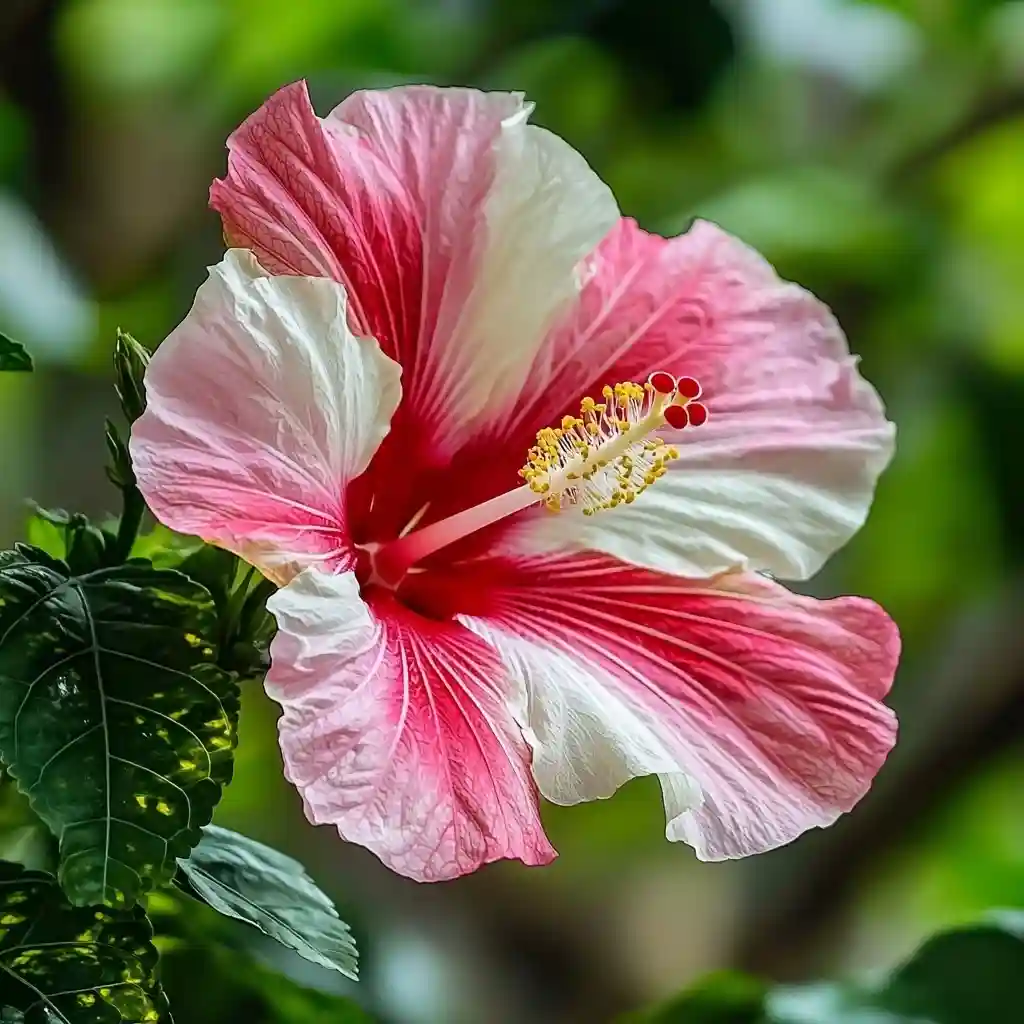
Hibiscus Tricolor is a standout among the most stunning types of hibiscus, thanks to its eye-catching variegated foliage just as much as its flowers. Its leaves are a living canvas—splashed with green, white, and pink—offering garden interest even when the plant isn’t in bloom.
Native to tropical regions, this variety produces deep red, funnel-shaped flowers that pop beautifully against the pastel-toned foliage. It’s a compact grower, typically reaching 4 to 6 feet tall, making it ideal for container gardens, patios, or colorful hedge rows.
What makes Hibiscus Tricolor especially appealing is its adaptability. With proper sunlight and well-drained soil, it thrives in both garden beds and pots. Horticulturists often use grafting techniques to preserve its vibrant leaf coloring, which might fade under low light or nutrient-poor conditions.
This variety is perfect for those who want a decorative plant that performs both as a foliage feature and a flowering star.
7. Luna Red
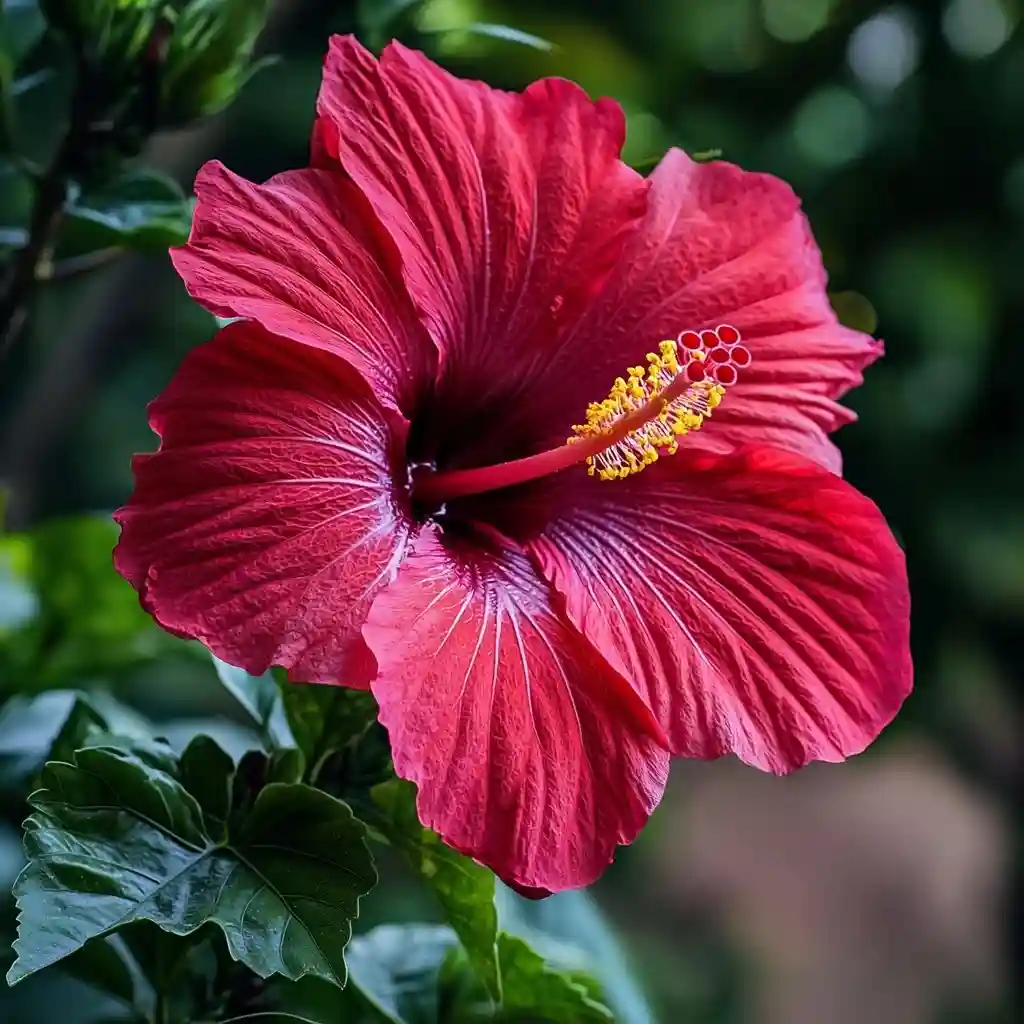
The Luna Red hibiscus is a compact powerhouse and one of the most stunning types of hibiscus for small-space gardeners. Its massive, dinner-plate-sized blooms span 6 to 8 inches and boast a rich, velvety crimson color that immediately grabs attention.
This perennial variety stays relatively low, maturing at just 3 to 4 feet in height, which makes it an excellent choice for borders, raised beds, or decorative containers. Despite its size, the Luna Red puts on a bold summer display, often blooming continuously from mid-season through early fall.
It thrives in full sun and requires moist, well-draining soil to maintain its lush foliage and vibrant blossoms. Hardy in zones 5 through 9, this variety can handle colder winters, dying back to the ground and reemerging in spring with renewed vigor.
Gardeners looking for a bold pop of red without needing a towering shrub will find Luna Red to be a striking, low-maintenance addition to their landscape.
8. Blue Bird

Among the most stunning types of hibiscus, the Blue Bird variety stands out with its cool-toned, lavender-blue petals and deep maroon centers. Officially known as Hibiscus syriacus ‘Blue Bird’, this shrub brings a refreshing hue rarely found in garden flowers.
Growing to a manageable height of 4 to 6 feet, Blue Bird is ideal for mixed borders, hedges, or as a flowering focal point in smaller gardens. Its blooms appear in midsummer and continue into early fall, each one measuring around 4 inches across and attracting plenty of pollinators along the way.
This hardy shrub thrives in full sun but can tolerate partial shade. It prefers well-drained soil and benefits from annual pruning in early spring to encourage fuller growth and heavier flowering. Blue Bird is also resistant to deer and urban pollution, making it a practical and beautiful choice for suburban and city gardens alike.
9. Secret Heart

Secret Heart hibiscus earns its place among the most stunning types of hibiscus thanks to its remarkable, color-shifting petals. Depending on the temperature and sunlight, this hybrid cultivar produces blooms that transition between pink, deep red, and even hints of blue—giving your garden a dynamic and ever-changing display.
A product of expert crossbreeding between ‘Rocket’s Red Glare’ and ‘Crème de Cacao’, Secret Heart offers flowers that typically span 6 to 7 inches across. The plant grows to about 4 to 5 feet tall and prefers full sun exposure to bring out its most vibrant hues.
This variety thrives in slightly alkaline, well-draining soil and needs regular watering during the active growing season. Because of its show-stopping blooms and compact shape, it’s a favorite in front yard flower beds, patio containers, and mixed tropical borders.
Its ability to surprise with shifting colors makes Secret Heart a true garden conversation piece.
10. Kenaf

Kenaf may not be the first plant that comes to mind when thinking of the most stunning types of hibiscus, but this unique species (Hibiscus cannabinus) brings both beauty and practical value to the garden. Known for its tall stalks and sunflower-like yellow blooms with a deep maroon throat, Kenaf offers visual appeal along with eco-friendly benefits.
This fast-growing annual can reach heights of 6 to 12 feet, thriving in warm climates with full sun and well-drained soil. While it produces attractive flowers, Kenaf is more widely appreciated for its fibrous stalks, which are harvested in some regions for making rope, textiles, and biodegradable materials.
In ornamental landscapes, Kenaf serves as a dramatic background plant or natural screen. Its upright form and lush foliage add height and texture to garden beds, while its blooms attract bees and butterflies during the summer months.
For gardeners interested in both sustainability and aesthetics, Kenaf is a striking, multifunctional addition.
11. Lord Baltimore
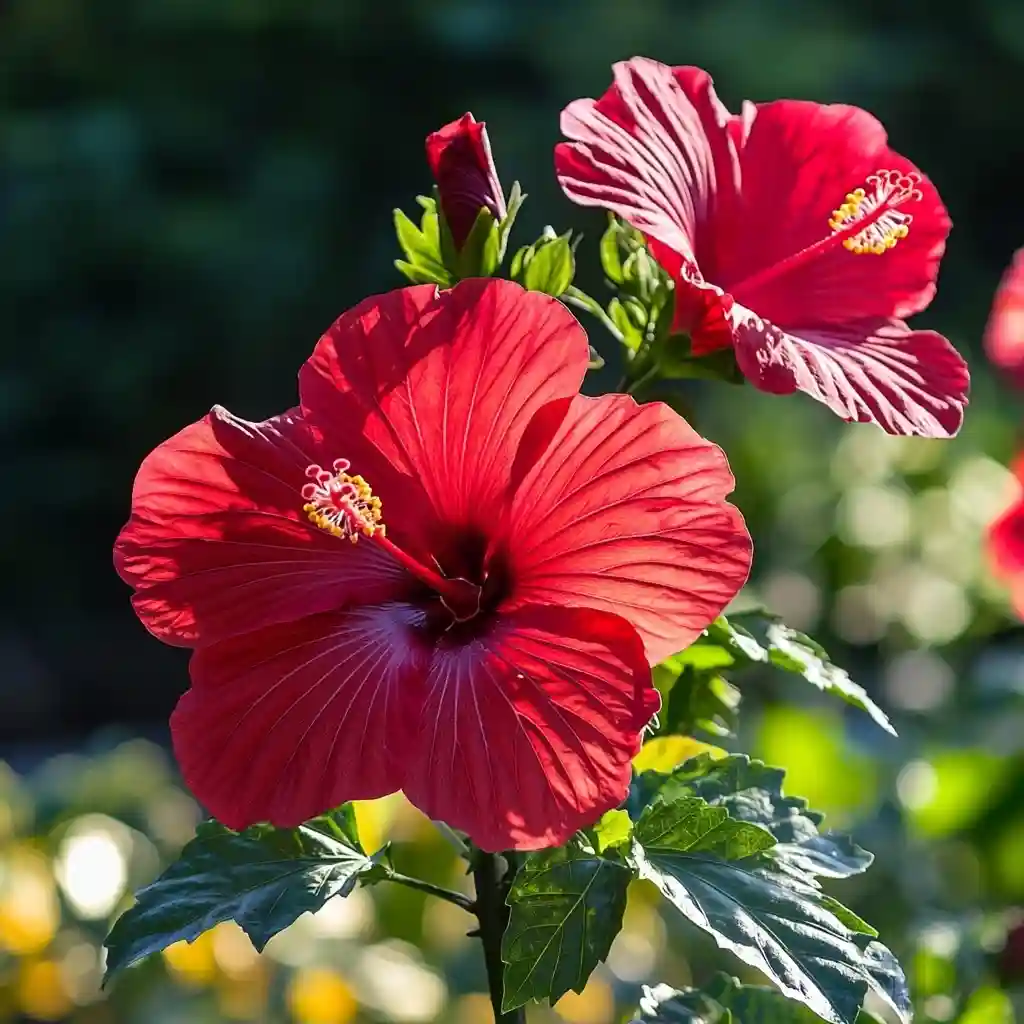
Lord Baltimore is a bold, sun-loving perennial that ranks high among the most stunning types of hibiscus. With enormous, fiery red blooms spanning 8 to 10 inches, this cultivar delivers unmatched visual impact throughout the summer months.
A cross between several hardy hibiscus species, Lord Baltimore typically grows 4 to 5 feet tall with a wide, bushy habit that fills out flower beds and borders beautifully. Its ruffled, vivid petals are offset by glossy green leaves, creating a lush, tropical effect even in temperate climates.
Hardy in zones 5 through 9, this hibiscus dies back in winter and re-emerges each spring with strong, fast-growing stems. It thrives in full sun and moist, rich soil, blooming continuously from mid-summer to early fall.
Due to its size and brilliance, Lord Baltimore is perfect for gardeners seeking a showpiece plant. It also attracts pollinators, making it both beautiful and beneficial to your garden’s ecosystem.
12. Confederate Rose

The Confederate Rose is one of the most stunning types of hibiscus not just for its large blooms, but for their dramatic color transformation. Each flower starts the day as pure white, shifts to soft pink by midday, and deepens to a rich rose by evening—giving the illusion of a multicolored garden from just one plant.
Botanically known as Hibiscus mutabilis, this deciduous shrub can grow between 8 to 12 feet tall, often blooming from late summer into fall when other plants begin to fade. Its large, peony-like flowers can span up to 6 inches across, and they cluster beautifully along its branches.
Confederate Rose thrives in full sun to light shade and prefers fertile, well-draining soil. It’s a great option for southern gardens, particularly in zones 7 to 9, where it brings vibrant, late-season color with very little upkeep.
Its ability to change hues daily adds a magical touch to any landscape, making it a conversation starter and a seasonal showpiece.
13. Rock Hibiscus
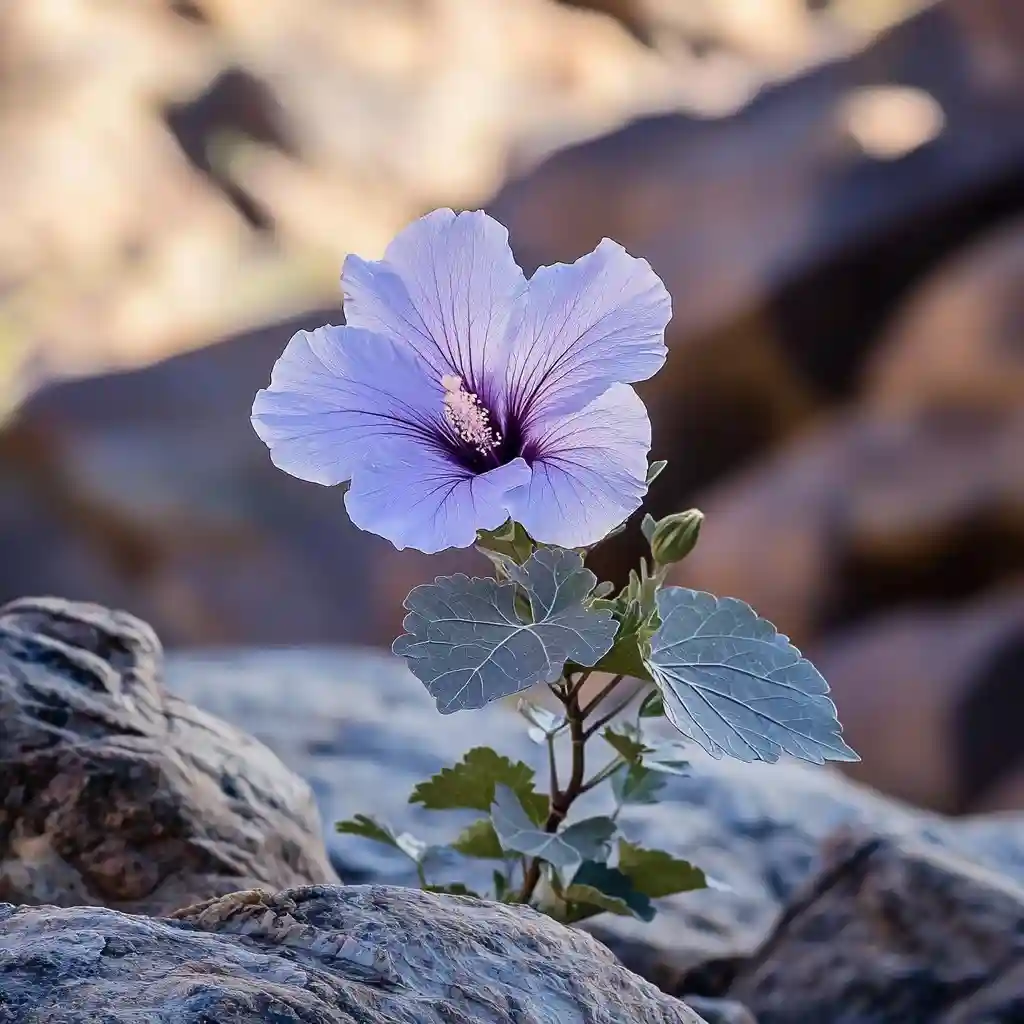
The Rock Hibiscus (Hibiscus denudatus) earns its place among the most stunning types of hibiscus by thriving in places where few other flowers dare to grow. Native to the rocky deserts of the American Southwest and northern Mexico, this tough yet beautiful plant produces delicate blooms in soft shades of lavender, pink, or white.
It’s a low-growing shrub, typically reaching 2 to 4 feet tall, with slender, gray-green leaves that blend into arid landscapes. But when it blooms—usually after rainfall—it transforms with a profusion of papery flowers that contrast beautifully against dry, rugged backdrops.
Rock Hibiscus is extremely drought-tolerant and thrives in full sun with minimal watering, making it ideal for xeriscaping or natural desert gardens. It’s also a favorite among pollinators like bees and butterflies.
This desert gem proves that resilience and beauty can go hand-in-hand, especially in harsh environments where vibrant life is least expected.
14. China Rose
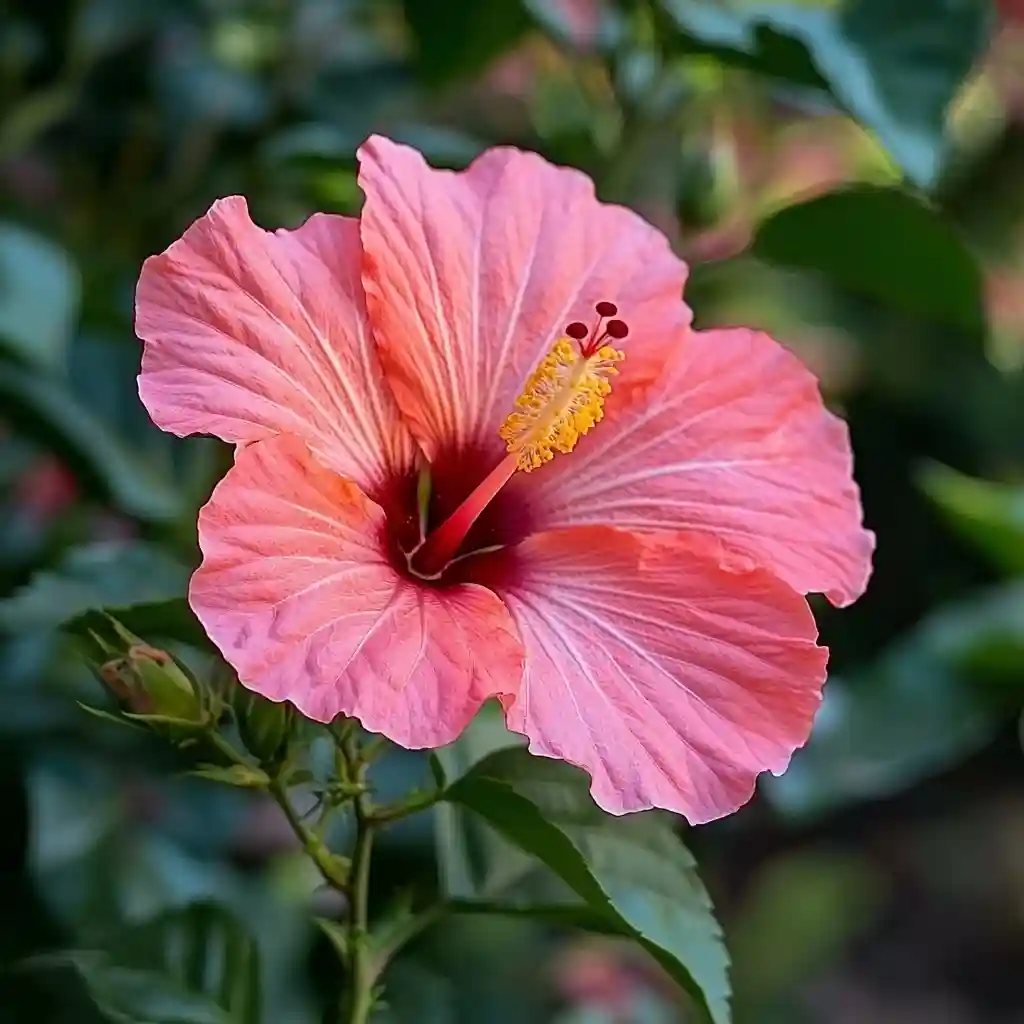
The China Rose (Hibiscus rosa-sinensis) is a timeless classic and one of the most stunning types of hibiscus cultivated around the world. Revered for its dazzling variety of flower colors—ranging from vibrant red to golden yellow, orange, pink, and even multicolored blends—this tropical shrub is a staple in warm-climate gardens.
China Rose grows between 4 and 10 feet tall, forming a dense, bushy shape filled with glossy, dark green foliage. The blooms are large and trumpet-shaped, with some varieties featuring double petals for added elegance. While each flower lasts only a day or two, the plant blooms profusely throughout the growing season.
It thrives in full sun and moist, well-drained soil, though it also adapts well to container gardening. In tropical and subtropical zones, China Rose is often used as a hedge, specimen plant, or colorful patio feature.
Low-maintenance and incredibly rewarding, this hibiscus adds exotic charm and rich color to nearly any landscape.
15. Bedazzled

Bedazzled hibiscus lives up to its name, offering one of the most stunning types of hibiscus displays for gardeners who crave drama. This tropical hybrid dazzles with ruffled, double-petal blooms in vibrant shades of deep orange, coral, and gold—each flower looking like a piece of living art.
Developed from heat-tolerant parent plants, Bedazzled performs exceptionally well in warm, sunny climates. Its flowers reach 6 to 8 inches wide, and its compact growth habit—typically around 3 to 5 feet—makes it ideal for patios, garden beds, or containers where a splash of high-impact color is desired.
This variety requires full sun, well-draining soil, and regular watering to support consistent blooming. While not frost-hardy, it can be overwintered indoors in cooler climates.
Gardeners who choose Bedazzled are rewarded with continuous, show-stopping blooms throughout the summer. It’s a favorite for tropical-themed gardens or anywhere a bold, colorful focal point is needed.
16. Mango Liqueur

Mango Liqueur is a luscious standout among the most stunning types of hibiscus, known for its warm, sunset-inspired colors and ruffled petal design. Each bloom glows with golden yellow and rich orange tones, often tinged with coral or deep apricot—evoking the vibrant hues of a tropical cocktail.
This eye-catching hybrid typically reaches heights of 8 to 12 feet, making it an excellent choice for use as a garden centerpiece or colorful hedge. Its large, double blooms measure 6 to 8 inches across and appear consistently during warm months, especially with full sun and ample moisture.
The plant is heat-tolerant and thrives in tropical to subtropical regions. In cooler climates, Mango Liqueur can be grown in large containers and brought indoors during winter. Its sturdy stems and glossy foliage offer a lush background that enhances the fiery brilliance of each bloom.
For those looking to turn their garden into a tropical paradise, Mango Liqueur delivers both vibrancy and elegance.
17. Abelmosk
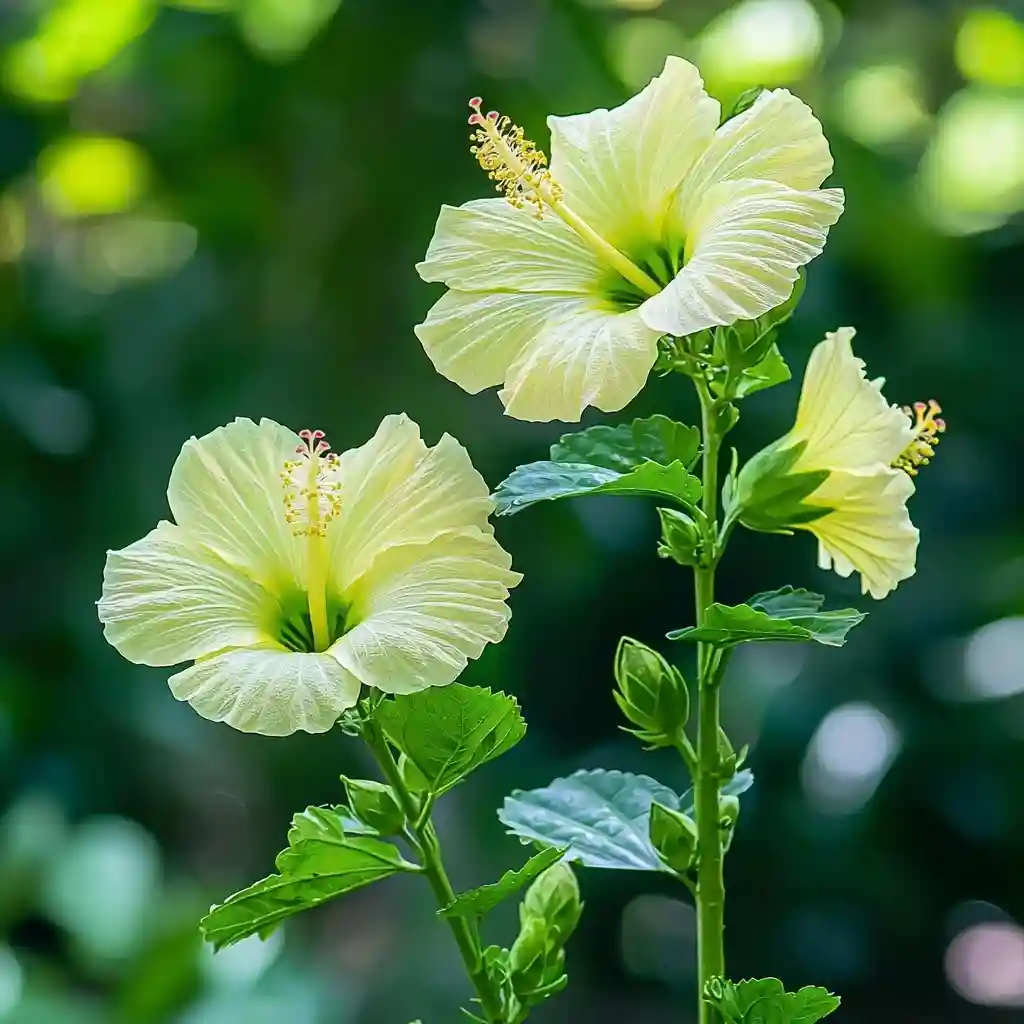
Abelmosk, also known as Hibiscus abelmoschus or musk mallow, may be less known than some showier varieties, but it’s still one of the most stunning types of hibiscus for gardeners who appreciate both ornamental and aromatic qualities. This tropical annual or short-lived perennial is native to India and Southeast Asia, where it’s prized not only for its pale yellow flowers with deep maroon centers but also for its fragrant seeds.
The plant grows upright, often reaching 5 to 6 feet tall, with deeply lobed leaves and elegant, hibiscus-like blooms that open during the day. Its seed pods, once mature, emit a musky, vanilla-like scent and are sometimes used in perfumes or even coffee blends.
Abelmosk thrives in warm, sunny conditions with well-drained soil and moderate watering. While not as flashy as some hybrids, its delicate charm and unique fragrance make it a favorite for sensory gardens, cottage borders, or herbal landscapes.
This hibiscus proves that beauty isn’t only about color—sometimes, it’s in the aroma.
18. Cranberry Hibiscus
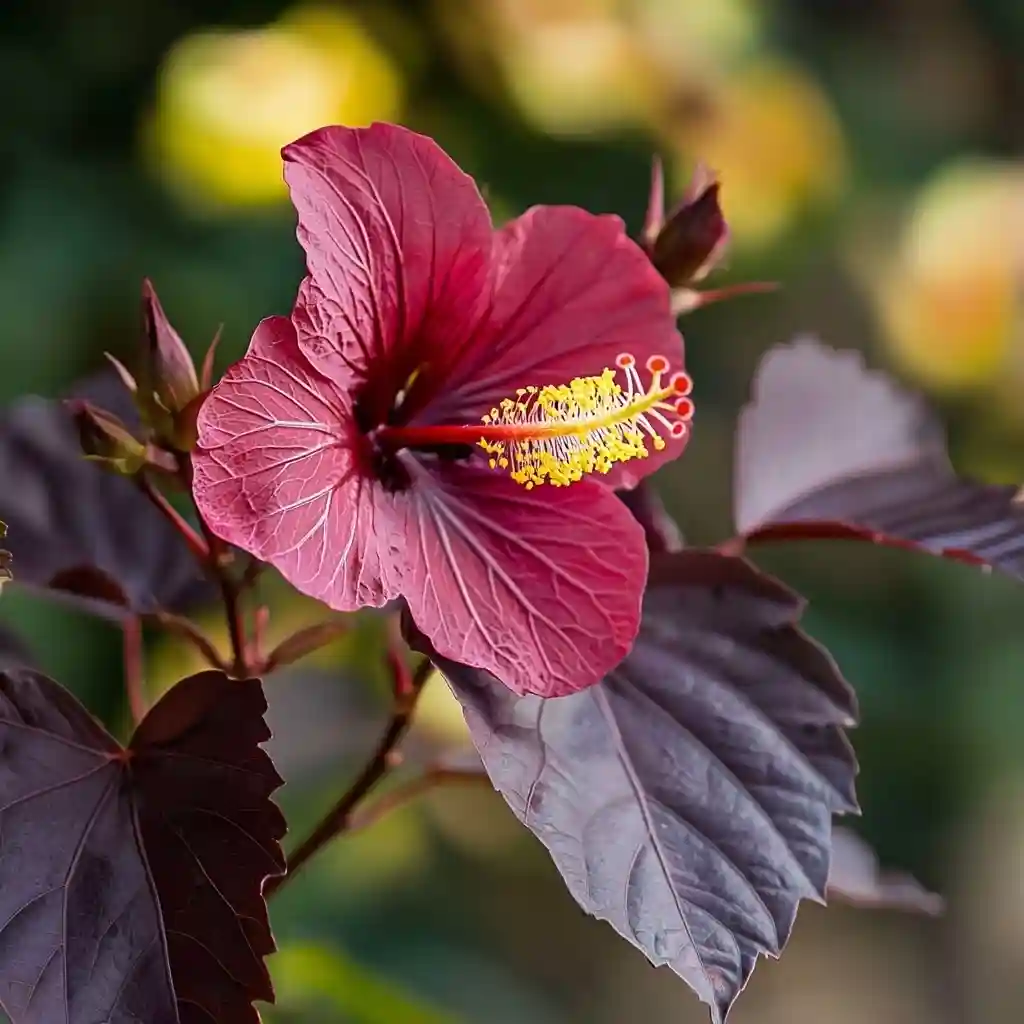
Cranberry Hibiscus (Hibiscus acetosella) is one of the most stunning types of hibiscus not just for its flowers—but for its foliage. With deeply lobed, maple-like leaves in rich shades of burgundy and deep wine-red, this plant adds dramatic contrast to green-heavy gardens year-round.
While its flowers are delicate and short-lived—typically light pink or yellow with a maroon center—they bloom intermittently throughout the growing season and offer an elegant accent to the dark foliage. The plant can grow 3 to 5 feet tall and wide, forming a dense, bushy structure that works beautifully in ornamental beds, edible gardens, or even patio containers.
Cranberry Hibiscus is edible, too. The leaves have a tangy, lemony flavor and are often used in salads, teas, or as colorful garnishes. It thrives in full sun and well-drained soil, with moderate water needs and minimal pest issues.
This variety is ideal for gardeners who want both visual impact and multi-functional use from a single plant.
19. Roselle

Roselle (Hibiscus sabdariffa) is a botanical all-star and easily one of the most stunning types of hibiscus for both visual and practical appeal. Recognized by its vibrant red calyces—thick, fleshy structures at the base of the flowers—Roselle is widely used in herbal teas, syrups, jams, and traditional medicines across Africa, Asia, and the Caribbean.
While the pale yellow blooms with maroon centers are attractive in their own right, it’s the deep crimson calyces that steal the show. These form after the flower fades and are typically harvested for culinary use. The plant grows upright, reaching 4 to 7 feet tall, and prefers full sun, warm weather, and rich, well-draining soil.
Roselle isn’t just beautiful; it’s packed with vitamin C, antioxidants, and anti-inflammatory properties. Gardeners often use it in edible landscapes or herb gardens, especially in regions with long, warm growing seasons.
For those seeking color, utility, and tropical flair, Roselle delivers on all fronts.
20. Cherry Cheesecake

Cherry Cheesecake is undoubtedly one of the most stunning types of hibiscus, offering blooms that look good enough to eat. This hardy perennial flaunts massive 7 to 9-inch flowers with creamy white petals streaked in bold magenta and a rich, cherry-red center—creating a visual effect as decadent as its dessert-inspired name.
A member of the Hibiscus moscheutos family, Cherry Cheesecake typically grows 4 to 5 feet tall and performs best in full sun with moist, well-draining soil. Its dramatic flowers appear from mid to late summer, often continuing into early fall, making it an excellent choice for maintaining seasonal color.
This variety is especially popular in perennial beds, borders, and pollinator gardens. It’s cold-hardy in zones 4 through 9 and will die back in winter before emerging robustly each spring.
Cherry Cheesecake combines bold visual appeal with easy maintenance, making it a top pick for gardeners seeking maximum bloom power with minimal fuss.
21. Scarlet Rosemallow
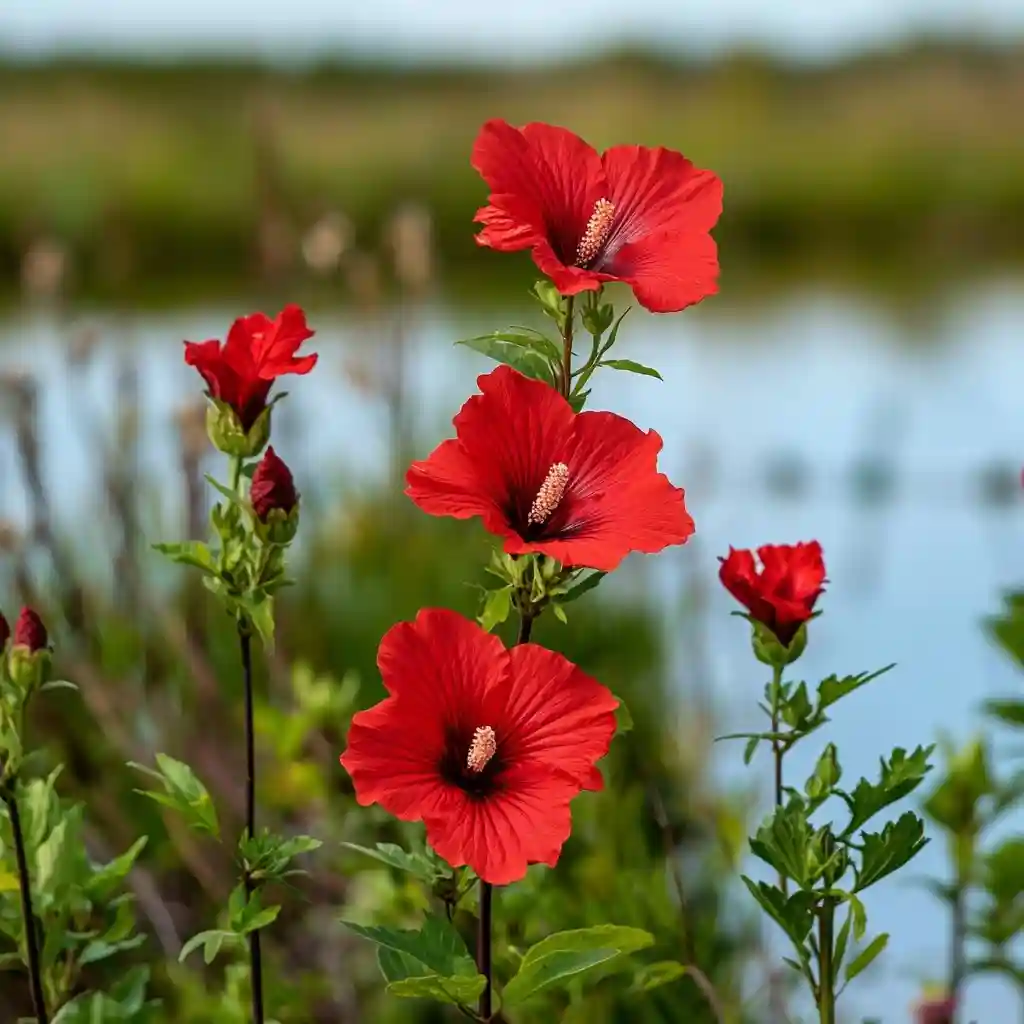
The Scarlet Rosemallow (Hibiscus coccineus) is a native wildflower that ranks among the most stunning types of hibiscus for its vivid, eye-popping red blooms. Each flower features five narrow, pointed petals arranged in a star shape, often spanning 6 to 8 inches wide—creating a bold statement in wetland or rain garden landscapes.
Native to the southeastern United States, Scarlet Rosemallow can grow between 6 to 8 feet tall and thrives in full sun with consistently moist soil. It’s especially well-suited for boggy areas, pond edges, or rain gardens, where its striking flowers attract hummingbirds, butterflies, and other pollinators all summer long.
Despite its wild nature, it adapts well to cultivated gardens. The plant’s tall, upright form and deeply lobed foliage add both vertical interest and native charm to planting schemes.
Gardeners looking for a dramatic native perennial with ecological benefits will find Scarlet Rosemallow both beautiful and beneficial.
22. Flower of an Hour
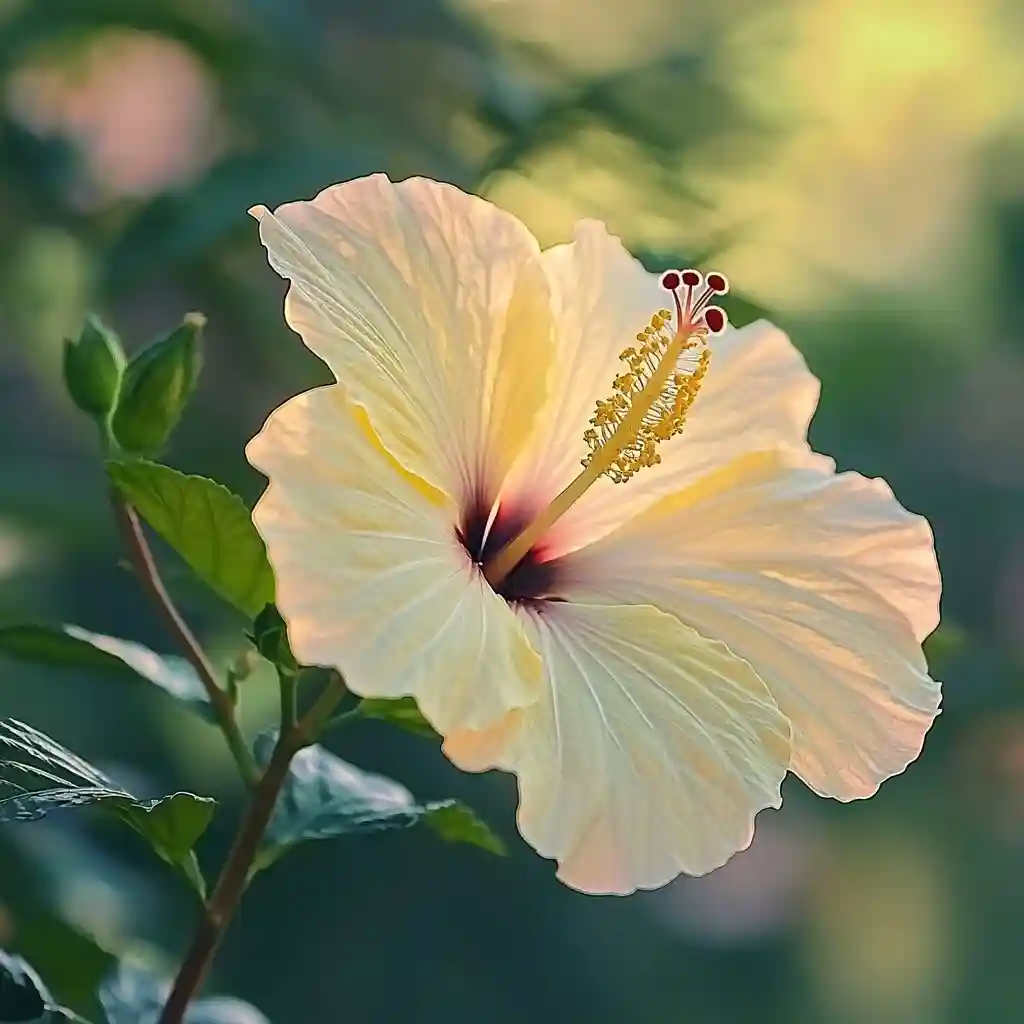
The Flower of an Hour (Hibiscus trionum) may have a fleeting bloom time, but it easily earns its place among the most stunning types of hibiscus for its delicate beauty and ethereal presence. Each flower lasts only a single day—often just a few hours—but its pale yellow petals with a rich maroon center make every moment memorable.
This compact annual or short-lived perennial grows 1 to 3 feet tall, making it an excellent choice for borders, wildflower meadows, or cottage gardens. Its finely divided leaves add texture, while its self-seeding nature means it often returns the following year with minimal effort from the gardener.
Flower of an Hour thrives in full sun and well-drained soil, requiring little more than occasional watering. Its brief blooming window can be extended by planting in clusters to ensure a succession of daily blooms.
Perfect for naturalized areas or informal garden settings, this dainty hibiscus proves that even short-lived flowers can leave a lasting impression.
23. Aphrodite

Named after the Greek goddess of beauty, Aphrodite hibiscus lives up to its name as one of the most stunning types of hibiscus. This hardy shrub produces large, striking blooms in deep pink with golden-yellow centers, set against glossy, dark green foliage that creates the perfect dramatic backdrop.
Aphrodite belongs to the Hibiscus syriacus family and typically grows 5 to 8 feet tall, forming an upright, vase-shaped shrub that works beautifully as a flowering hedge, privacy screen, or centerpiece in a mixed border. It blooms reliably from midsummer into fall, offering months of continuous color.
Well-suited for USDA zones 5 through 9, Aphrodite thrives in full sun and tolerates a range of soil types, as long as drainage is adequate. It’s also deer-resistant and adaptable to urban conditions, making it an ideal choice for low-maintenance landscaping.
For gardeners looking for long-lasting flowers with minimal fuss, Aphrodite delivers timeless elegance and garden-worthy charm.
24. Rose Mallow

Rose Mallow (Hibiscus moscheutos) is a showstopper that easily ranks among the most stunning types of hibiscus for its massive, plate-sized blooms that can reach 10 to 12 inches in diameter. These spectacular flowers come in a range of soft pastel shades—white, pink, rose, and even bicolors—all typically featuring a bold maroon center that draws in pollinators.
Native to North American wetlands, Rose Mallow thrives in moist, rich soil and full sun. It can grow between 3 to 8 feet tall and spreads broadly, making it ideal for the back of borders, along fences, or beside ponds and water features.
This hardy perennial is cold-tolerant (zones 4–9) and dies back completely in winter, only to emerge robustly each spring with vigorous stems and lush foliage. Its long bloom season, stretching from midsummer to early fall, keeps the garden lively when other perennials begin to fade.
Rose Mallow is an excellent choice for gardeners who want bold color, native appeal, and reliability in one dramatic plant.
25. Exuberance
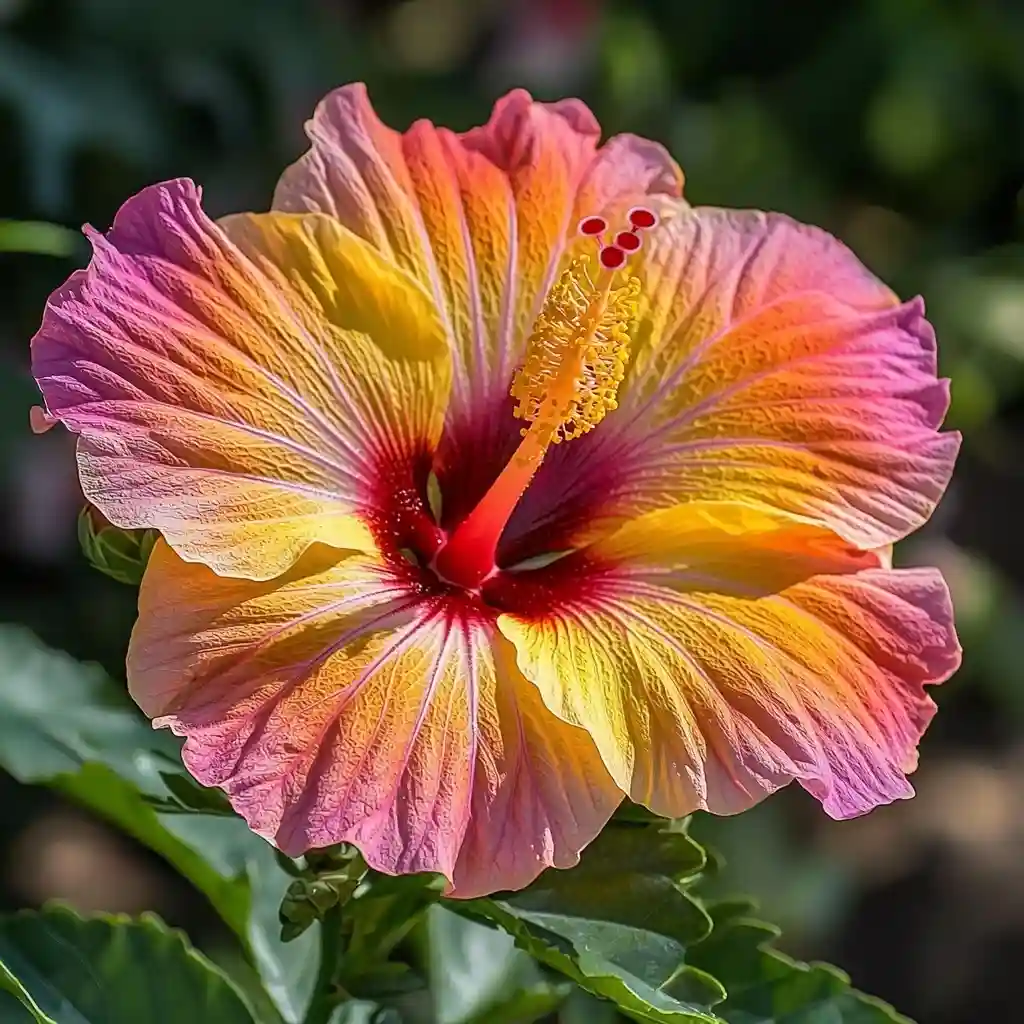
True to its name, Exuberance is one of the most stunning types of hibiscus for gardeners who crave bold color and abundant bloom. This tropical hybrid explodes with multicolored flowers—radiant shades of orange, red, yellow, and pink all swirling together on ruffled petals that span 7 to 9 inches wide.
Exuberance has a compact yet bushy habit, typically reaching 4 to 6 feet in height. It performs best in full sun, where it can develop its most intense coloring, and requires well-draining soil with consistent moisture. While it’s not frost-hardy, it thrives in tropical and subtropical climates and can also be grown in large containers in cooler zones with winter protection.
What makes Exuberance especially appealing is its long bloom period and consistently vibrant floral show, making it a favorite for patios, poolside gardens, or tropical-themed borders.
This variety is perfect for gardeners who want nonstop color and personality from their landscape all season long.
26. Blue River II

Blue River II is a serene beauty and one of the most stunning types of hibiscus for gardeners who love soft, elegant color palettes. This hardy perennial showcases large, pure white blooms—often spanning 8 to 10 inches across—with subtle, creamy undertones and striking crimson centers that glow in the summer sun.
A member of the Hibiscus moscheutos family, Blue River II grows up to 4 to 6 feet tall and spreads broadly with dense, deep green foliage that provides a perfect contrast to its snowy flowers. It blooms profusely from mid to late summer, drawing in pollinators like butterflies and hummingbirds.
This variety thrives in full sun with consistently moist, rich soil and performs well in both garden beds and near water features. Hardy in zones 4 through 9, it dies back in winter and returns each spring stronger and fuller.
Blue River II offers a clean, classic look and is perfect for creating a tranquil, refreshing focal point in any sunny garden.
27. Checkered Hibiscus
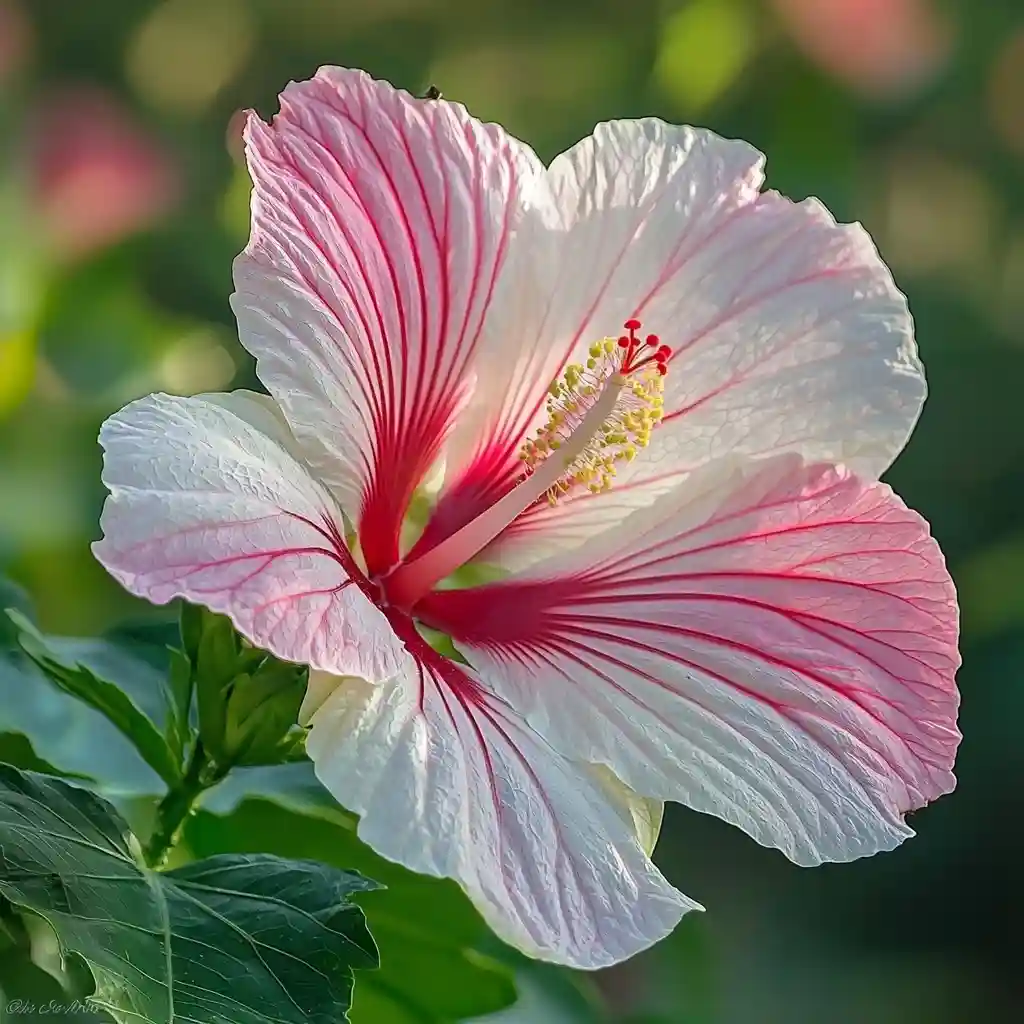
Checkered Hibiscus is a bold and colorful addition to the list of the most stunning types of hibiscus, prized for its unique multicolored blooms. Typically featuring petals streaked or spotted in shades of pink, red, white, and cream, each flower has a hand-painted look that makes it stand out in any garden setting.
A member of the Malvaceae family, this variety thrives in moist, well-draining soil and full to partial sunlight. It typically grows to a height of 3 to 5 feet, with dense foliage that serves as a vibrant backdrop for the striking flowers. Its relatively compact size makes it ideal for use in borders, butterfly gardens, or container displays.
Checkered Hibiscus blooms from mid to late summer, often attracting pollinators like bees and butterflies with its open, inviting flower structure. It’s a great option for gardeners looking to add artistic flair and a pop of color to more traditional landscapes.
Its visual charm and easy care make Checkered Hibiscus a joyful, eye-catching presence wherever it’s planted.
28. Giant Rose Mallow
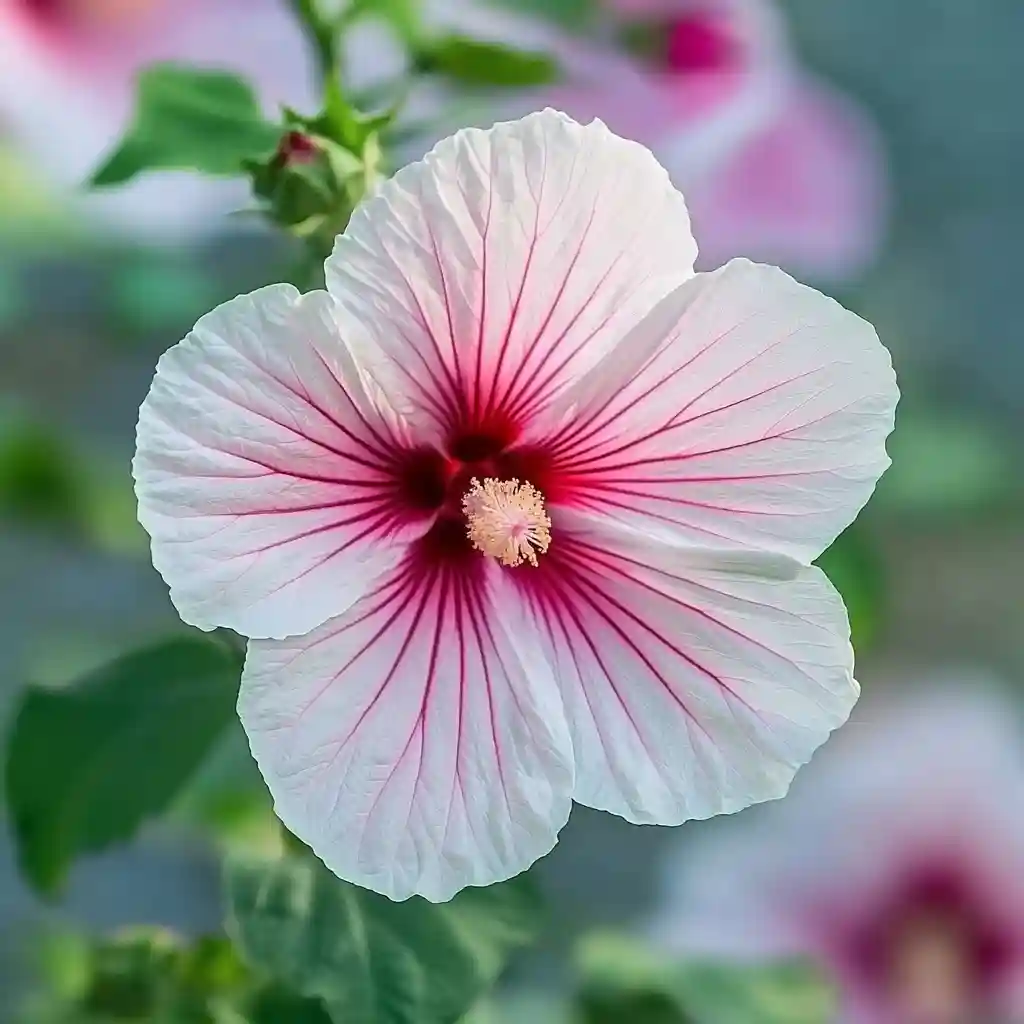
Giant Rose Mallow lives up to its name as one of the most stunning types of hibiscus, delivering oversized blooms that are nothing short of spectacular. Flowers can reach an impressive 10 inches or more in diameter, with soft pink petals that fade to white near the edges and surround a bold crimson center.
This hardy perennial (Hibiscus moscheutos cultivar) typically grows 4 to 6 feet tall with a wide, bushy shape and dark green or sometimes purplish foliage, offering both floral drama and leafy texture. It thrives in full sun and moist, nutrient-rich soil, making it perfect for planting near ponds, garden borders, or as a statement piece in large beds.
Blooming from midsummer until the first frost, Giant Rose Mallow attracts pollinators and attention alike. In winter, it dies back to the ground and returns reliably each spring with vigorous new growth.
For gardeners seeking maximum impact with minimal maintenance, Giant Rose Mallow is a top-tier choice that delivers unforgettable summer color.
29. Luna Pink Swirl

Luna Pink Swirl wraps up this collection of the most stunning types of hibiscus with a soft yet showstopping flair. This compact perennial features enormous 6 to 8-inch blooms in pastel pink and white, with a vivid red eye at the center that adds a bold contrast to the delicate petals.
As part of the Luna series, this variety typically grows just 3 to 4 feet tall and wide, making it perfect for smaller gardens, patios, or containers. Despite its compact size, it doesn’t hold back on blooms—flowering heavily throughout the summer and into early fall.
Luna Pink Swirl thrives in full sun and well-drained, fertile soil with consistent moisture. It’s also hardy in zones 5 through 9, dying back in the winter and returning reliably each spring. The symmetrical flower form and strong stems make this hibiscus a favorite for both ornamental landscaping and cutting gardens.
For gardeners who want elegance, color, and manageability all in one, Luna Pink Swirl delivers in every petal.
author:Conclusion
Whether you’re working with a tropical paradise, a cottage border, or a modest container garden, incorporating some of these stunning types of hibiscus can instantly elevate your outdoor space. From the fiery drama of Black Dragon to the delicate grace of Luna Pink Swirl, hibiscus plants offer a remarkable spectrum of size, color, and texture.
Many of these varieties also invite butterflies, hummingbirds, and other pollinators, adding ecological value to their undeniable beauty. Plus, with options that thrive in tropical heat or withstand colder climates, there’s truly a hibiscus for every garden and every gardener.
As you plan your garden layout, consider pairing hibiscus with companion plants like ornamental grasses, salvias, or daylilies for layered blooms and continuous seasonal color.
By choosing the right types for your space and climate, you’ll enjoy vibrant, low-maintenance beauty season after season.
🌿 Love gardening inspiration? Follow me on Pinterest for bold plant ideas, tips, and seasonal color!
More Posts
